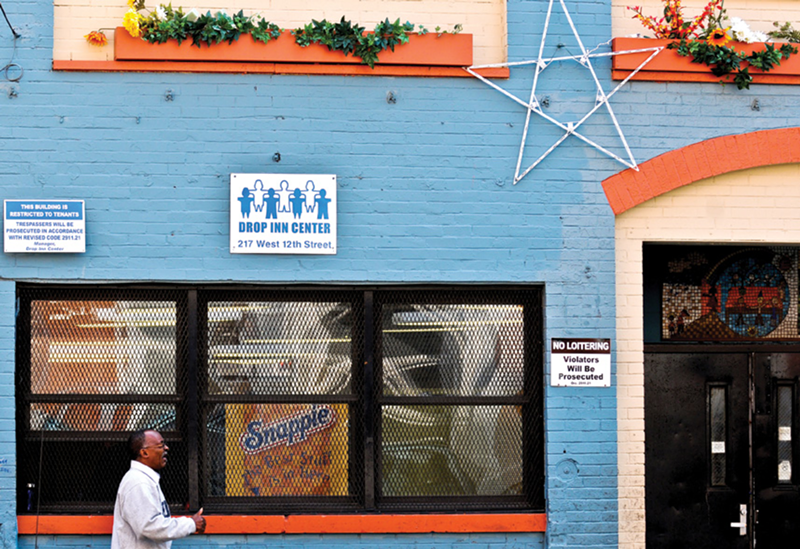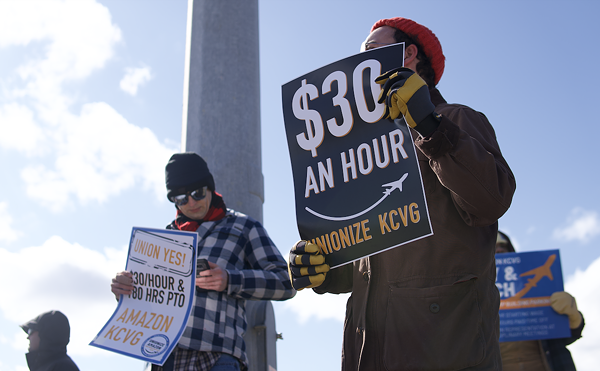C
incinnati City Council on Nov. 7 took a step toward moving two homeless shelters out of the Washington Park area, but not all council members or homeless advocates are sure that is the right move.
All but one council member voted to approve the application of a $37 million federal loan, $7 million of which would go toward moving the Drop Inn Center and building a new women’s homeless shelter to be run by the YWCA.
The City Gospel Mission is also being relocated, but will not
receive any of the federal loan money due to the religious nature of some of its services.
“I see that as a plan to purge Over-the-Rhine of folks they have kind of hysterically deemed undesirable,” says Alice Skirtz, president of Affordable Housing Advocates. Skirtz has been vocal in her opposition before council. “It’s part of the plan to upscale and gentrify Over-the-Rhine.”
The loan to relocate the Drop Inn Center and build the YWCA shelter stems from the 2009 Homeless to Homes plan. The plan recommended, among other things, adding additional beds to shelters and improving their facilities.
City Gospel Mission president Roger Howell says his existing facility just can’t fit any more beds and has no room for additional services, so relocation is the only feasible option. Howell said he’s been trying to move since 2002.
“This is not, as some people have implied, 3CDC making me move,” he says.
The City Gospel Mission is in the process of relocating to Queensgate.
Some council members shared Skirtz’s concerns. Councilman Chris Seelbach, who said he moved to Over-the-Rhine shortly after the 2001 riots, voted to approve the loan application but also voiced some concern.
“The reason I moved is because I loved it; I fell in love with the diversity of the neighborhood,” he says, noting income diversity as well as racial and ethnic variety.
“I would hope that we could find a location for the Drop that is in Over-the-Rhine and there isn’t a continued effort to push low income people out of Over-the-Rhine.”
Councilman Chris Smitherman was the sole member to vote against applying for the loan. During the vote he spoke out in support of helping the homeless but said he wasn’t sure the loan was the best use of taxpayer money.
If approved, the loan would come from the U.S. Department of Housing and Urban Development (HUD). The $7 million used to relocate the shelters would be repaid by taking roughly $500,000 out of Community Development Block Grants given to the city each year for the next 20 years. If HUD approves the loan application, it would still have to sign off on each individual project.
Smitherman — a self-described fiscal hawk — says the federal government has been cutting those grants in recent years and it is unlikely they’d be increased.
He also questioned whether relocating existing shelters was the best use of funds.
“At its core, is the money supposed to be used to create more low-income housing, or is the money for the relocation of centers?” he says. “I think that’s a fundamental and fair question for me to ask.”
Some advocates for the homeless would like to see that money go toward affordable housing to get people out of homelessness.
Josh Spring, executive director of the Greater Cincinnati Homeless Coalition, would rather see that money go to create housing and job programs to eliminate the root of homelessness — the lack of homes. He says the Homeless Coalition supports the shelters, but they’re doing what they’re supposed to be doing.
Spring says, on average, people leave a shelter in 60 days or less and that there’s a job crisis and housing crisis.
“Historically, a majority of shelters started between 1982 and 1990,” Spring says. “It’s because in that era we cut dollars to housing and employment.”
Spring said the city subsidized the upscale shops and condos developed in Over-the-Rhine and he would rather see the shelter relocation money used to subsidize affordable housing and job creators like dry good stores and hardware stores that help people out of homelessness.
The loan, if approved, could provide for some of the things advocates are calling for.
Senior Development Analyst Roy Hackworth says $11 million will go toward an economic development loan pool, while $17 million will be fronted toward housing developments that will be paid back with low-income housing tax credits.
Kevin Finn — executive director of Strategies to End Homelessness and one of the architects of Homeless to Homes — said more affordable housing units is part of the plan
He said relocation was not part of the plan, but it called for upgrading existing shelters, many of which can’t do so where they are.
“Right now we have shelters with no space for them to do things with their people during the day. So they’re kicked to the street at the beginning of each day, so they’re on the street instead of doing things that can get them out of homelessness,” Finn says.
The revamped shelters would have things like drug and alcohol treatment programs, resume-building workshops and other day programs, according to Finn.
Vice Mayor Roxanne Qualls, who has championed the plan, says all parts of Homeless to Homes — emergency shelters, transitional housing and permanent supportive housing — need to be in place to work.
“I think what the community should hopefully note is that if we manage to fully implement all the recommendations of Homeless to Homes … then we will actually as a community be transforming how we provide services to homeless men and women, but will also hopefully be a transformative force in the lives of the indviduals for the better,” she says.
©





